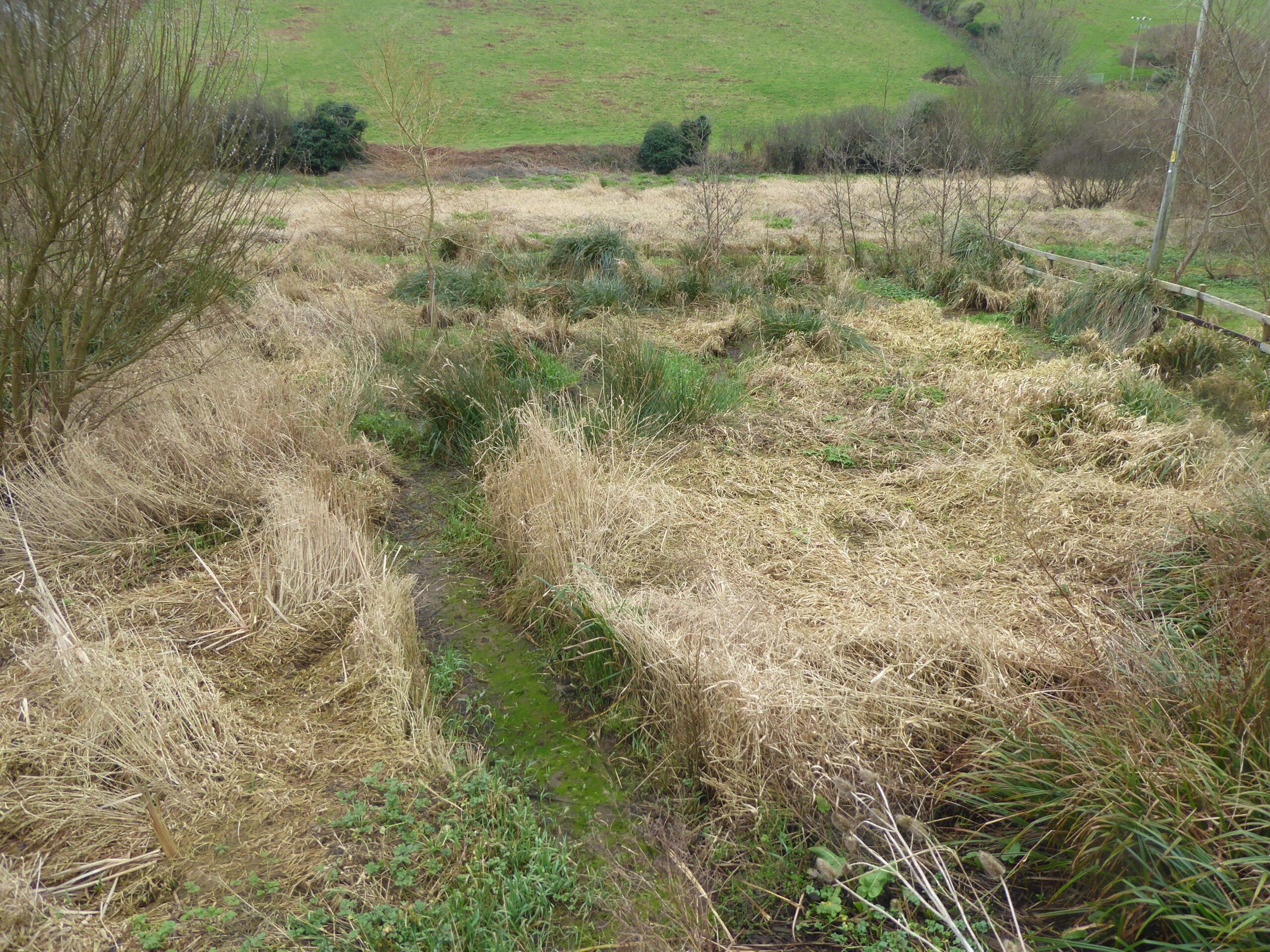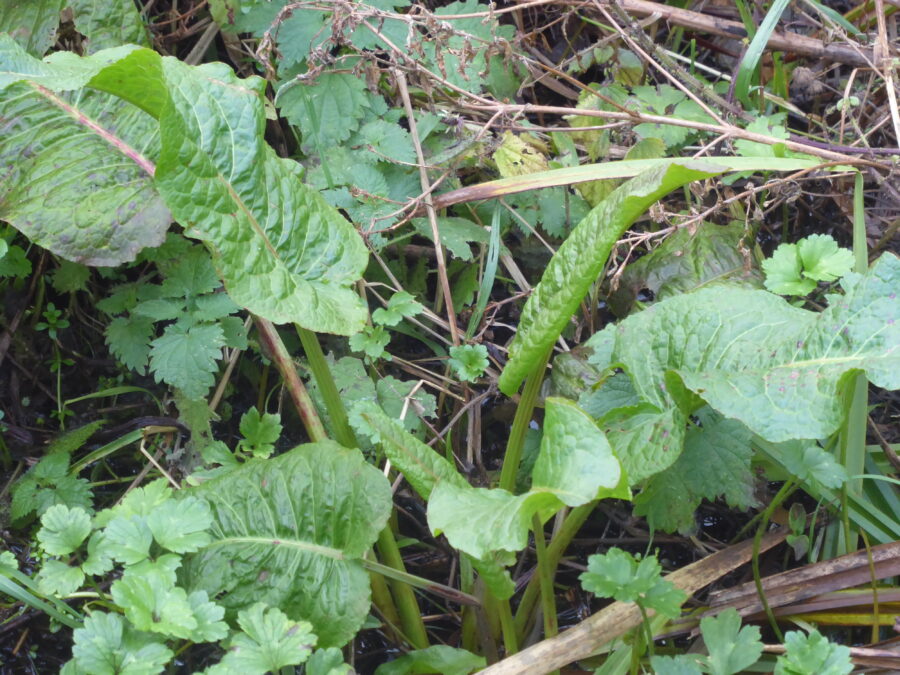As with the rest of the valley, there are some clumps of HWD appearing in the middle of the wild bits. Mr C is planning on venturing into the ‘interior’ to pull them up as we don’t want such a toxic plant on our patch. They are peeping out of the dry grass to the right of the picture above.
The paths are in a fragile state of mud and algae, as evidenced by Little Venice above. We have lost the turf there, but the grass is growing back on the other paths. I am watching a couple of the plants in Little Venice to see if I can identify them when/if they flower.
So, the green foliage apart from HWD and algae, is buttercup, bedstraw, dock, and clumps of sedge, which are evergreen. It’s exciting to see plants coming back to life again, along with bees, and also wolf spiders running over dry grass heaps.


